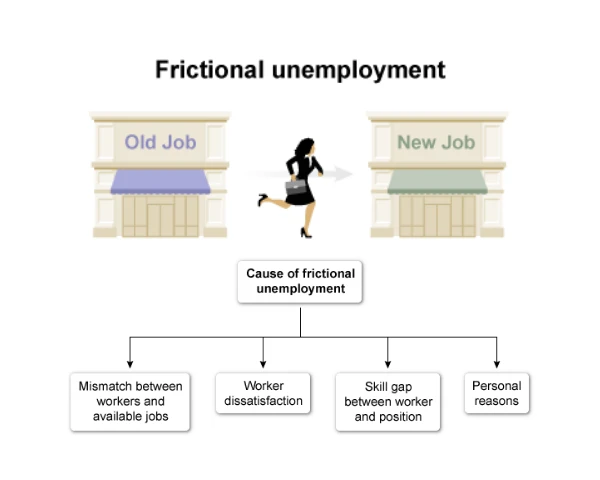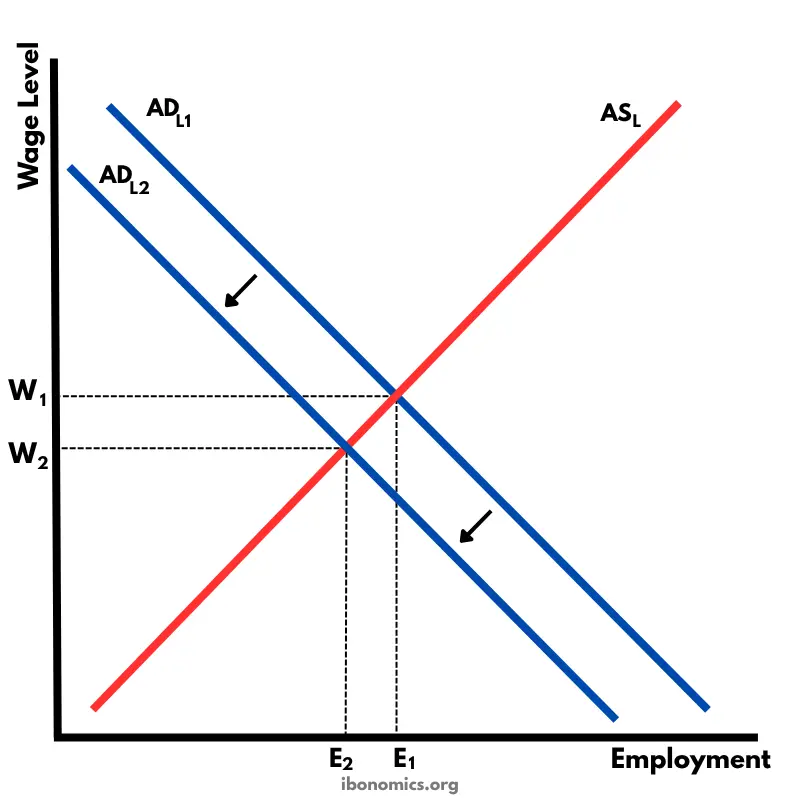AQA Specification focus:
‘The terms seasonal, frictional, structural and cyclical unemployment.’
Unemployment arises in different forms depending on the causes and duration. Understanding seasonal, frictional, structural and cyclical unemployment is essential for analysing economic performance and labour market dynamics.
Seasonal Unemployment
Seasonal unemployment occurs when demand for labour fluctuates at different times of the year due to predictable patterns in production or consumer behaviour.
Seasonal Unemployment: Joblessness that occurs at regular and predictable intervals because demand for certain goods or services changes with the seasons.
For example, workers in tourism, agriculture, and retail often experience this type of unemployment. Ski instructors may be unemployed in summer, while fruit pickers find work only during harvest seasons.
Characteristics of Seasonal Unemployment
Predictable and recurring.
Concentrated in specific industries (e.g., hospitality, farming, construction).
Often temporary, with workers returning to employment when the season resumes.
Policymakers usually do not view it as a major macroeconomic problem, but it can still impact income stability for workers.
Frictional Unemployment
Frictional unemployment arises when people are between jobs or entering the labour force for the first time. It is considered a natural and unavoidable part of a dynamic economy.
Frictional Unemployment: Short-term unemployment that occurs when workers are moving between jobs, entering or re-entering the workforce, or searching for better opportunities.
This type of unemployment persists because it takes time for workers to find suitable positions and for firms to locate appropriate employees.

This diagram depicts the causes of frictional unemployment, including job dissatisfaction, skill mismatches, and personal reasons, emphasising the temporary and voluntary nature of this unemployment type. Source
Causes of Frictional Unemployment
Graduates entering the labour market after finishing studies.
Workers voluntarily leaving jobs to seek better pay, conditions, or location.
Career changes or relocation.
Implications
Indicates labour mobility, which can benefit long-run efficiency.
Often reduced with improved information and job-matching services (e.g., job centres, online recruitment platforms).
Rarely a sign of economic weakness, as it reflects healthy turnover.
Structural Unemployment
Structural unemployment is caused by fundamental changes in an economy that reduce demand for certain skills while creating demand for new ones.
Structural Unemployment: Long-term unemployment resulting from mismatches between workers’ skills or geographical location and the requirements of the labour market.
It is more persistent than seasonal or frictional unemployment and often requires retraining or relocation.

This diagram illustrates structural unemployment, highlighting the impact of technological advancements and industry shifts on labour demand and employment levels. Source
Causes of Structural Unemployment
Technological change: Automation and digitalisation reducing demand for manual labour.
Globalisation: Outsourcing production to countries with lower costs.
Regional decline: Industries closing in specific areas (e.g., coal mining towns).
Education and skills gaps: Workers lacking qualifications for emerging industries.
Effects of Structural Unemployment
Long-term joblessness leads to skill erosion, worsening employability.
Creates regional disparities and income inequality.
Requires targeted government intervention (training schemes, subsidies, regional investment).
Cyclical Unemployment
Cyclical unemployment is linked to the economic cycle. It rises during recessions and falls during expansions.
Cyclical Unemployment: Unemployment that results from a downturn in economic activity, where reduced demand for goods and services lowers demand for labour.
Unlike frictional or structural unemployment, cyclical unemployment reflects short-term macroeconomic conditions rather than individual or sectoral mismatches.
Causes of Cyclical Unemployment
Recession leading to falling consumer demand.
Firms cutting production and reducing staff.
Decline in investment and confidence.
Features
Can affect all industries simultaneously.
Often linked to negative output gaps (where actual GDP is below potential GDP).
Considered the most damaging type of unemployment because it reduces income, output, and government tax revenues.
Comparing the Four Types of Unemployment
While each form of unemployment shares the common feature of people being out of work, their origins and implications differ significantly:
Seasonal unemployment is predictable and recurring, with limited long-term consequences.
Frictional unemployment reflects healthy job turnover but is usually short-term.
Structural unemployment is long-lasting, tied to deep changes in industry and skills.
Cyclical unemployment is strongly connected to the broader economic climate and can trigger widespread hardship.
Key Points for Students
Recognising which type of unemployment dominates in an economy helps policymakers choose appropriate responses.
Demand-side policies (e.g., fiscal and monetary stimulus) are often used for cyclical unemployment.
Supply-side policies (e.g., training, education reform) target structural unemployment.
Improved information and mobility reduce frictional unemployment, while seasonal unemployment is usually addressed with income support or temporary measures.
FAQ
Governments cannot directly measure types like structural or cyclical unemployment. Instead, they infer them using labour market surveys, economic indicators, and statistical trends.
For example, long-term unemployment concentrated in declining industries often signals structural unemployment, while sharp rises in joblessness during recessions indicate cyclical unemployment.
Frictional unemployment allows workers to search for jobs better suited to their skills, raising productivity in the long run.
It also encourages labour mobility, which helps industries adjust to changes in demand and technology more smoothly.
Industries particularly exposed include:
Tourism (e.g., seaside resorts and holiday destinations)
Agriculture (e.g., fruit and vegetable picking)
Retail (e.g., Christmas and Boxing Day sales peaks)
Construction (weather-dependent work)
These sectors experience predictable demand changes at specific times of year.
Yes, individuals may transition between categories. For example, a worker laid off during a recession may face cyclical unemployment but, if their skills become outdated, this can evolve into structural unemployment.
Similarly, a student graduating (frictional) may find only temporary seasonal work before entering long-term employment.
Seasonal unemployment is largely predictable, so policies like large-scale retraining schemes are often ineffective.
Instead, targeted measures such as short-term income support, flexible contracts, and promoting off-season tourism are more practical.
Long-term interventions usually have little impact since seasonal patterns are expected to reoccur each year.
Practice Questions
Define structural unemployment and briefly explain one cause. (3 marks)
Definition of structural unemployment (1 mark): e.g., long-term unemployment caused by a mismatch between workers’ skills and job requirements.
Explanation of one cause (up to 2 marks):
Technological change (automation replacing jobs) (1 mark).
Clear link to loss of employment in specific industries (1 mark). (Maximum 3 marks)
Discuss how cyclical unemployment differs from frictional unemployment. (6 marks)
Definition of cyclical unemployment (1 mark): unemployment arising from downturns in the economic cycle.
Definition of frictional unemployment (1 mark): short-term unemployment when people are between jobs or entering the labour market.
Explanation of difference in cause (1–2 marks): cyclical linked to macroeconomic downturns; frictional linked to job search/mobility.
Explanation of difference in duration/effects (1–2 marks): cyclical can be widespread and long-lasting; frictional is temporary and often voluntary.
Application/analysis (1 mark): reference to economic cycle, demand conditions, or labour mobility.
(Maximum 6 marks)

